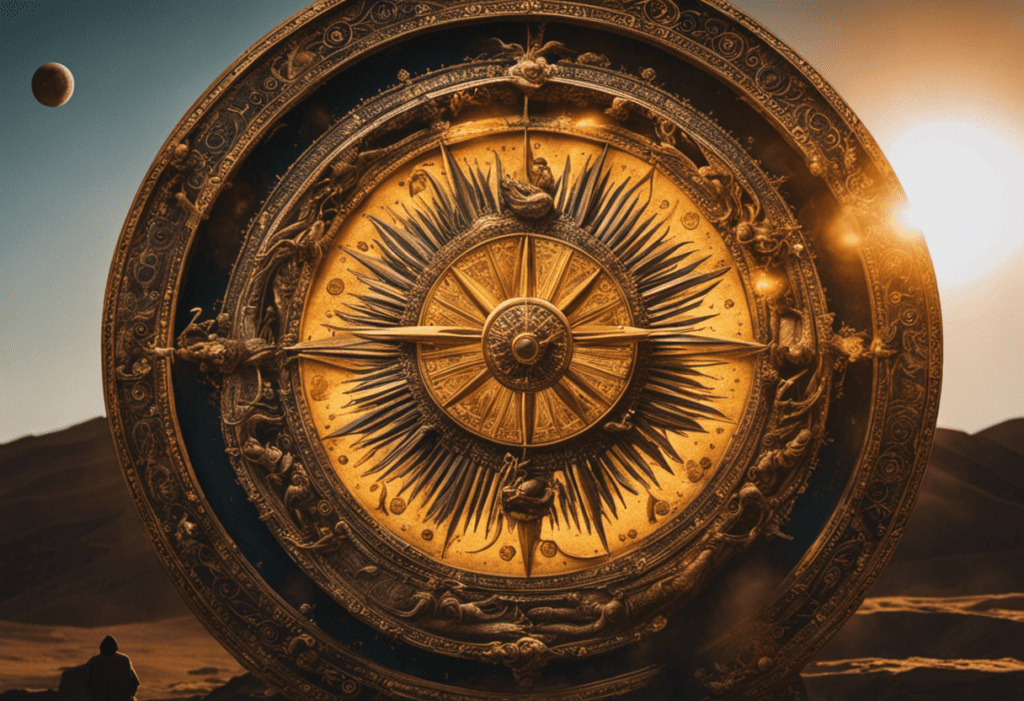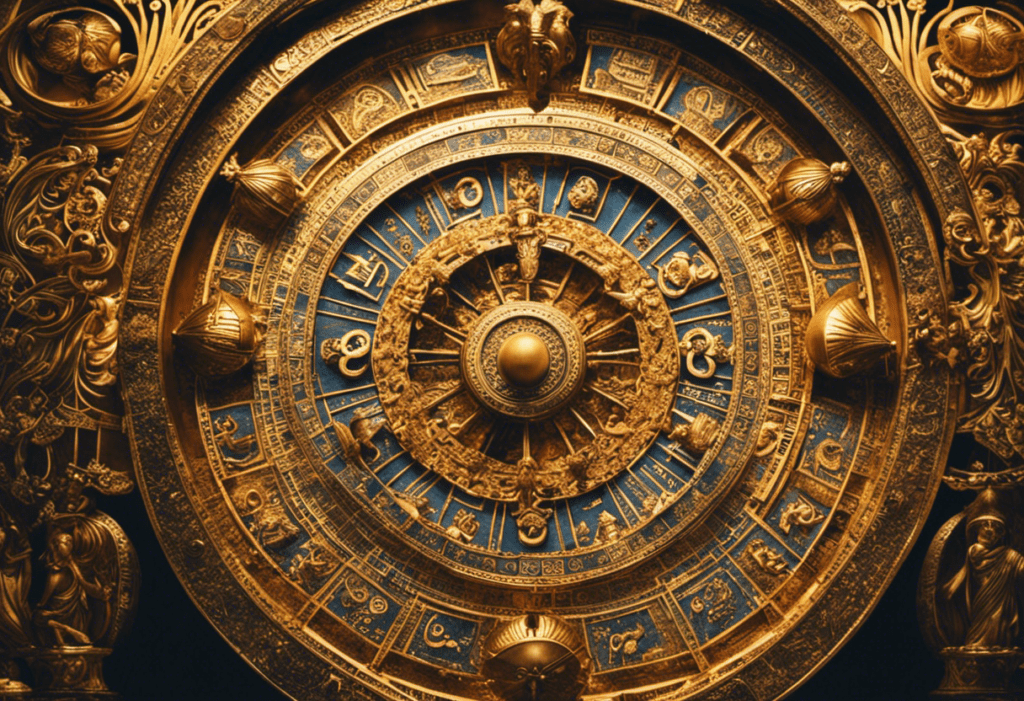In the symphony of time, Zoroastrianism orchestrates a harmonious blend of theological beliefs and celestial observations. Like a conductor guiding an ensemble, Zoroastrian timekeeping elegantly captures the eternal struggle between good and evil, dividing the day and night into sacred segments.
This article explores the profound significance of celestial events and how they serve as a tangible expression of Zoroastrian theological beliefs. Through a scholarly lens, we delve into the intricate melodies of Zoroastrian timekeeping, revealing the profound wisdom it holds.
Key Takeaways
- Zoroastrian timekeeping is based on the belief in the interconnection between the physical and spiritual realms.
- The movements and positions of the celestial bodies impact the balance in nature and represent different aspects of divinity.
- The eternal struggle between good and evil is a central theme in Zoroastrian theology, and rituals symbolize and reinforce this struggle.
- Zoroastrian timekeeping divides the day and night into specific intervals with symbolic significance, emphasizing the importance of aligning oneself with the forces of righteousness.
The Concept of Cosmic Harmony


One of the key aspects of understanding the concept of cosmic harmony is recognizing the intricate balance between the seven celestial bodies that govern the Zoroastrian timekeeping system. The Zoroastrian belief in the interconnection between the physical and spiritual realms is reflected in their timekeeping practices, where the movements and positions of these celestial bodies are considered to have a profound impact on the balance in nature.
The seven celestial bodies, namely the Sun, Moon, Mercury, Venus, Mars, Jupiter, and Saturn, each hold a significant position in the Zoroastrian cosmology. These bodies are believed to represent different aspects of divinity, and their harmonious interaction is seen as essential for maintaining the cosmic order. The balance in nature is believed to be a reflection of this cosmic harmony, and any disruptions in this balance are considered to be a result of disharmony in the celestial realm.
The influence of the celestial bodies on daily rituals is evident in Zoroastrian religious practices. The Zoroastrians pay close attention to the movements and positions of these celestial bodies, as they believe that they can influence various aspects of human life. For example, the position of the Sun is considered crucial in determining the appropriate times for performing rituals and prayers. Similarly, the phase of the Moon is believed to have an impact on fertility and agricultural activities.
The Eternal Struggle Between Good and Evil


The eternal struggle between good and evil is a central theme in Zoroastrian theology. It reflects the belief in the cosmic battle between the forces of righteousness and wickedness. This ongoing conflict is not only a metaphysical concept but also has practical implications for the followers of Zoroastrianism.
Symbolic rituals play a crucial role in embodying this struggle and reinforcing the moral accountability of individuals. Zoroastrianism places great importance on rituals as a means of connecting with the divine and expressing one’s devotion. These rituals, such as prayers, purification ceremonies, and fire offerings, are rich in symbolism and serve as a constant reminder of the eternal struggle between good and evil.
Through these rituals, followers seek to align themselves with the forces of righteousness and repel the forces of wickedness. Moreover, these symbolic rituals also emphasize the moral accountability of individuals. Zoroastrianism teaches that every action has consequences and that individuals are responsible for their choices and behavior. The rituals serve as a reminder of this moral accountability and encourage followers to strive for righteousness in their daily lives.
Divisions of the Day and Night
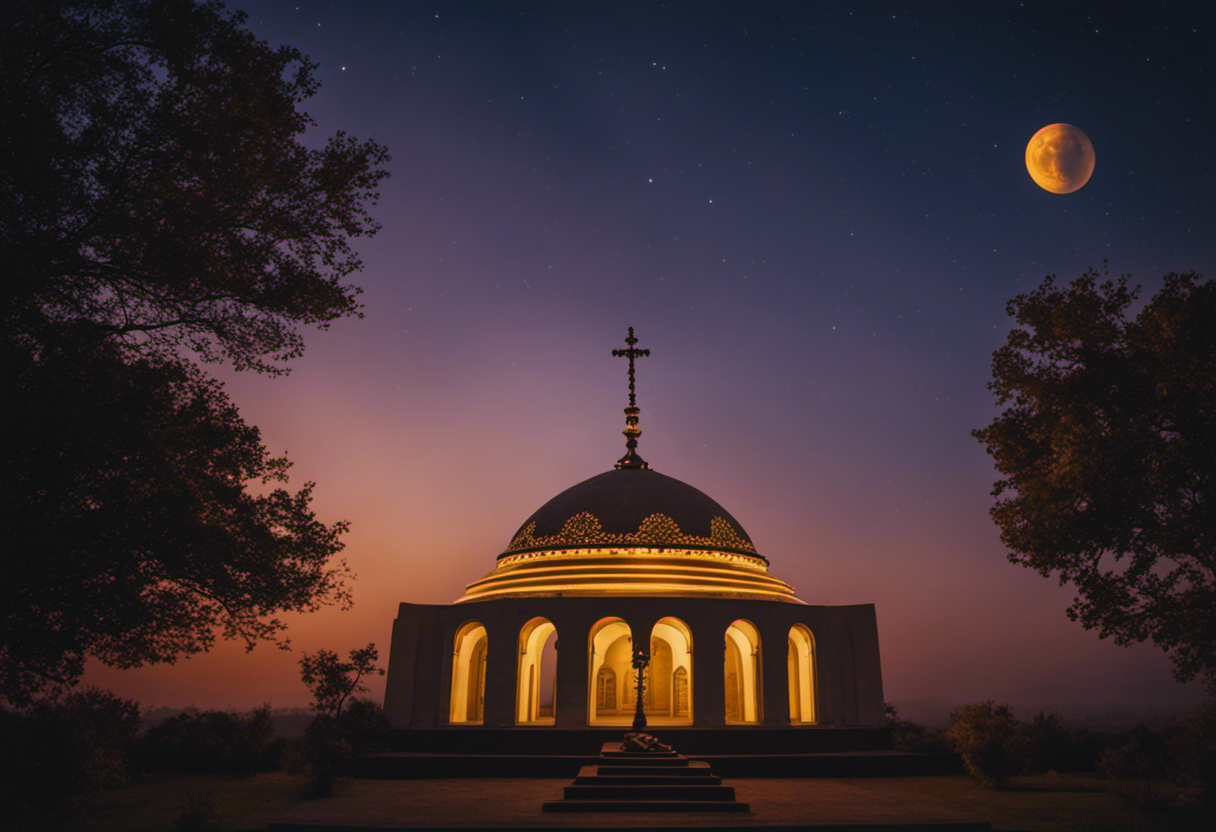

The divisions of the day and night in Zoroastrian timekeeping provide a structured framework for followers to engage in their symbolic rituals and align themselves with the forces of righteousness. Timekeeping techniques play a crucial role in religious practices, as they allow believers to mark specific moments and engage in meaningful actions.
In Zoroastrianism, time is divided into different intervals, each with its own symbolic significance. The Zoroastrian day is divided into five Gahs, or periods, which are further divided into watches. Each Gah represents a specific aspect of the divine order, and followers are encouraged to participate in appropriate rituals during these times. For instance, the morning Gah of Havan is associated with invigorating energy and is considered a favorable time for prayer and meditation. The midday Gah of Rapithwin signifies the zenith of the day and is associated with power and victory.
The divisions of the night are also significant in Zoroastrian timekeeping. The three watches of the night are associated with different spiritual forces and have distinct characteristics. The first watch, Yima, is associated with the divine presence, while the second watch, Vayu, represents spiritual guardianship. The final watch, Thrita, is associated with healing and restoration.
Overall, the divisions of the day and night in Zoroastrian timekeeping serve as a means for followers to engage with their religious practices and align themselves with the forces of righteousness. By adhering to these time divisions and participating in the appropriate rituals, believers symbolically reinforce their commitment to living a righteous life and upholding the principles of Zoroastrianism.
Significance of Celestial Events
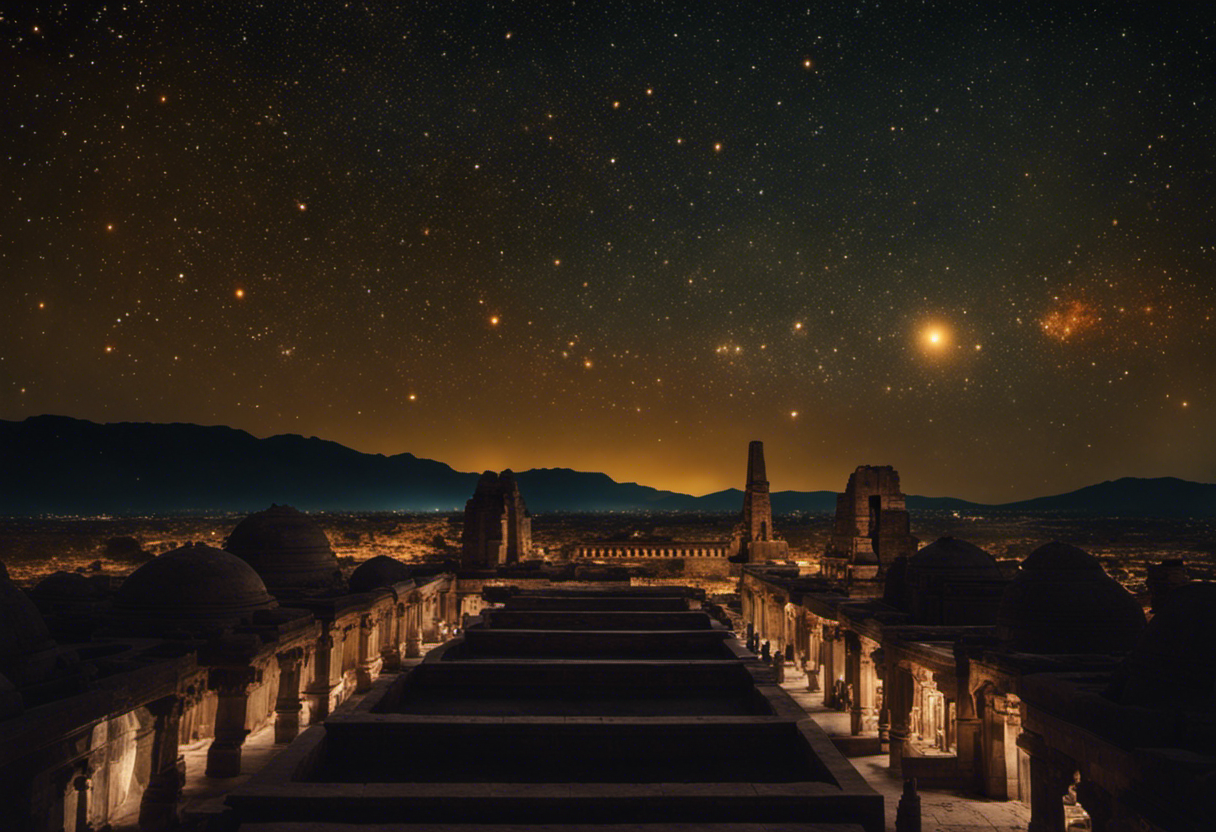

Throughout Zoroastrian timekeeping, followers not only mark the divisions of the day and night but also recognize the significance of celestial events such as eclipses and solstices, which serve as powerful reminders of the cosmic forces at play in their religious beliefs. The Zoroastrian calendar is closely intertwined with astrological interpretations, providing a framework for understanding the influence of celestial events on human behavior.
Astrological interpretations in Zoroastrianism involve observing the positions and movements of celestial bodies and interpreting their significance in relation to human life. Eclipses, for example, are seen as celestial battles between light and darkness, symbolizing the eternal struggle between good and evil in the Zoroastrian faith. Solstices, on the other hand, mark the turning points of the year and are associated with the renewal of cosmic energies.
These celestial events are believed to have a profound influence on human behavior. Zoroastrians believe that the alignment of celestial bodies at the time of a person’s birth can reveal their destiny and character traits. The movement of celestial bodies throughout the year also influences the timing of religious rituals and festivals, further emphasizing the connection between celestial events and human life.
Tangible Expression of Theological Beliefs
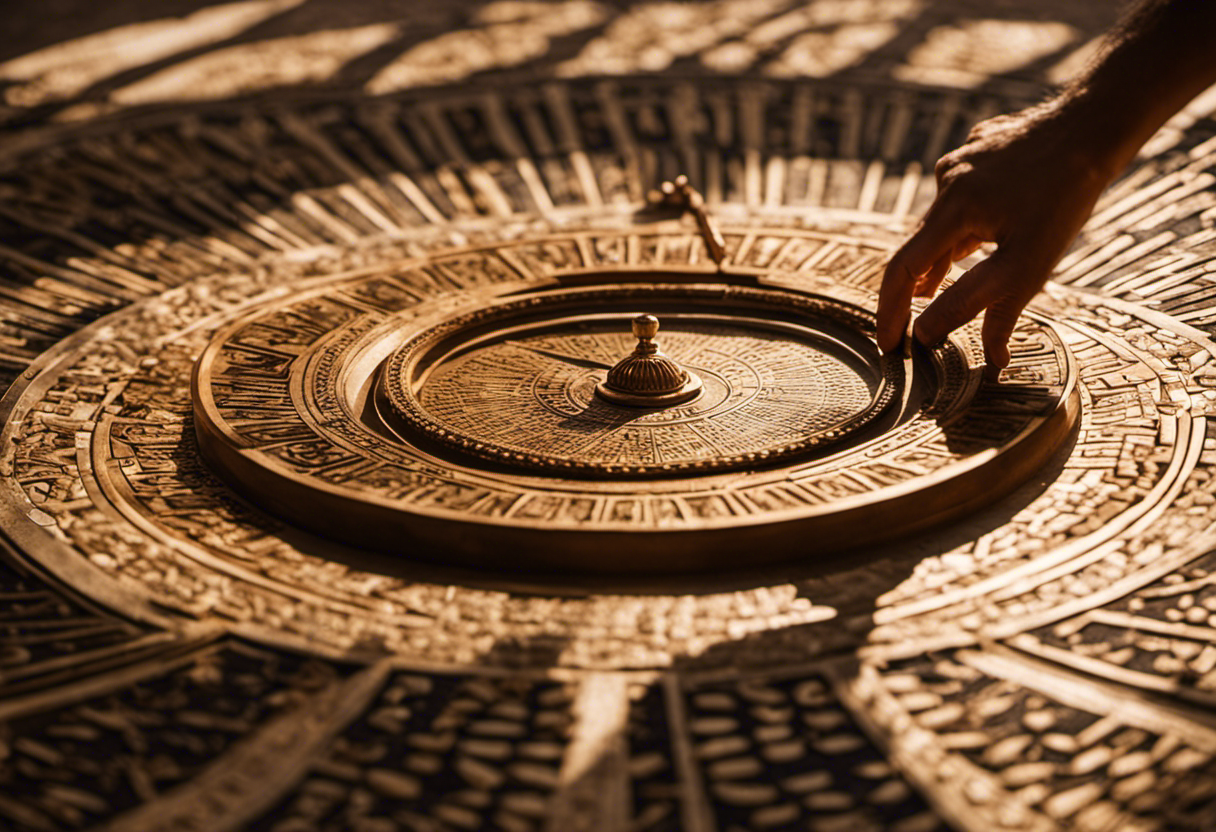

Within the realm of Zoroastrian timekeeping, followers find tangible expression of their theological beliefs through the observance and interpretation of celestial events. Zoroastrianism, one of the world’s oldest religions, places great importance on the concept of cosmic order and the interconnectedness of the physical and spiritual realms. Time in this tradition is perceived as a sacred and cyclical entity, with celestial bodies serving as interpretive symbols of spiritual significance.
The Zoroastrian calendar, known as the Shahenshahi calendar, is intricately linked to the movement of the sun and the moon. The solar year is divided into twelve months, each named after a specific aspect of nature. These months are further divided into thirty days, with an additional five or six intercalary days added at the end to maintain synchronization with the solar year.
The observation of celestial events, such as solstices and equinoxes, holds deep spiritual meaning for Zoroastrians. These events are seen as opportunities for devotees to connect with the divine and renew their commitment to righteousness. The rising and setting of celestial bodies are interpreted as messages from the divine, signaling the ebb and flow of cosmic energies.
Overall, Zoroastrian timekeeping serves as a tangible manifestation of the religion’s theological beliefs. By closely observing and interpreting celestial events, followers are able to deepen their understanding of the interconnectedness of the physical and spiritual realms, and find spiritual significance in the cyclical nature of time.
Conclusion
In conclusion, the Zoroastrian timekeeping system serves as a tangible expression of their theological beliefs. The divisions of the day and night symbolize the eternal struggle between good and evil, while celestial events hold great significance in their understanding of cosmic harmony.
This intricate system provides a framework for the Zoroastrian community to connect with their spirituality and navigate their daily lives. Like a carefully crafted tapestry, Zoroastrian timekeeping weaves together the threads of belief and tradition, offering a profound insight into their religious worldview.

